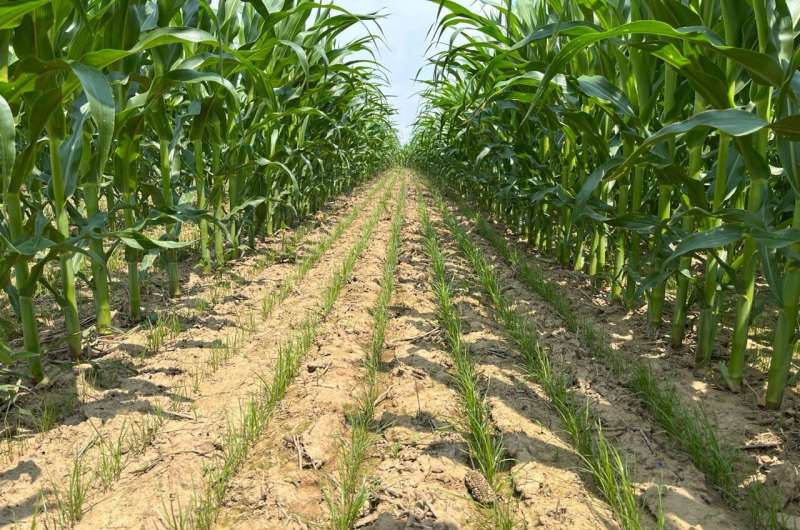This article has been reviewed according to Science X's and . have highlighted the following attributes while ensuring the content's credibility:
fact-checked
trusted source
proofread
Drill-interseeded cover crops in V3 corn reap benefits

Research published in the journal Weed Science shows that drill-interseeded cover crops into vegetative growth stage 3 (V3) corn performs well in Northeast U.S. production regions. The paper is titled "."
"Our results show that interseeding cover crops early, at the V3 corn-growth stage and in 30-in. row spacing, can balance cover crop and corn production management goals, while placing cover crops at a relative fitness advantage over weeds," says John Wallace, Ph.D., Assistant Professor, Pennsylvania State University, the article's lead author.
"Compared to interseeding at the V6 corn growth stage, interseeding at the V3 corn growth stage lengthens the cover-crop establishment period before rapid corn canopy closure, and thus contributes to a relative fitness advantage of cover crops over weeds."
Cover crops help corn producers achieve both sustainability and production goals. "If successfully established, the conservation benefits from cover crops are manifold," says Wallace.
"These benefits include increased water infiltration, reduced soil erosion, improved nitrogen scavenging, increased microbial abundance and carbon accumulation."
Other results from this study showed that cover crops attained greater relative fitness than weeds in each cultural practice that also included 30-in. corn rows, but greater relative fitness for weeds than cover crops when interseeding in 60-in. rows. The 30-in rows also yielded higher corn yields than 60-in. rows at two of the three locations.
More information: John M. Wallace et al, Light partitioning strategies impact relative fitness of weeds and cover crops when drill-interseeding in corn, Weed Science (2023).
Provided by Cambridge University Press


















